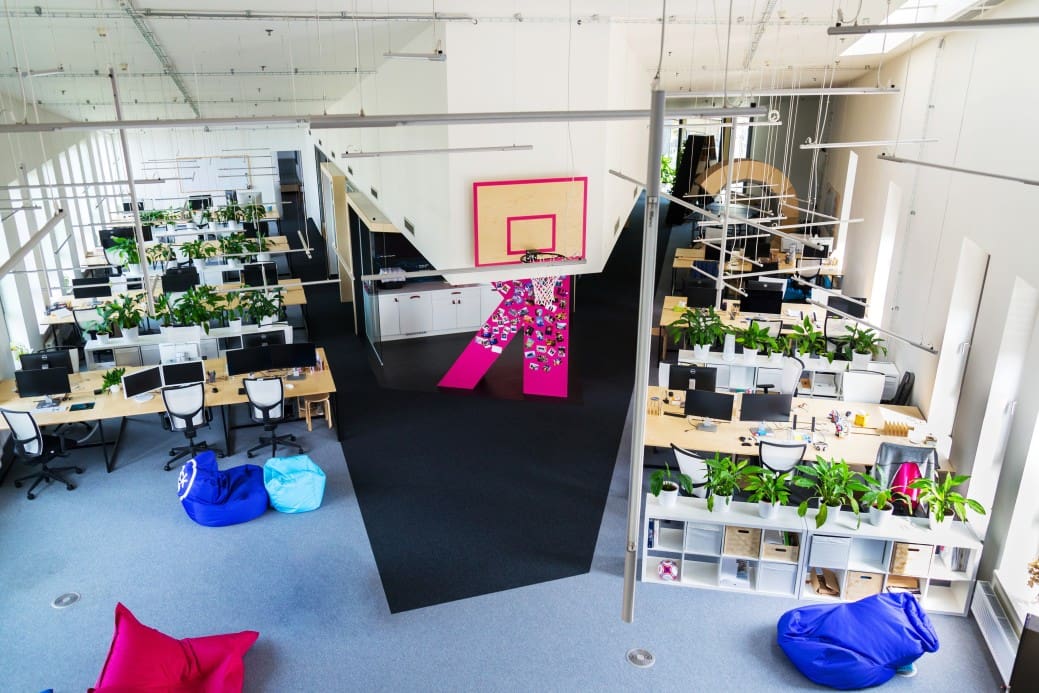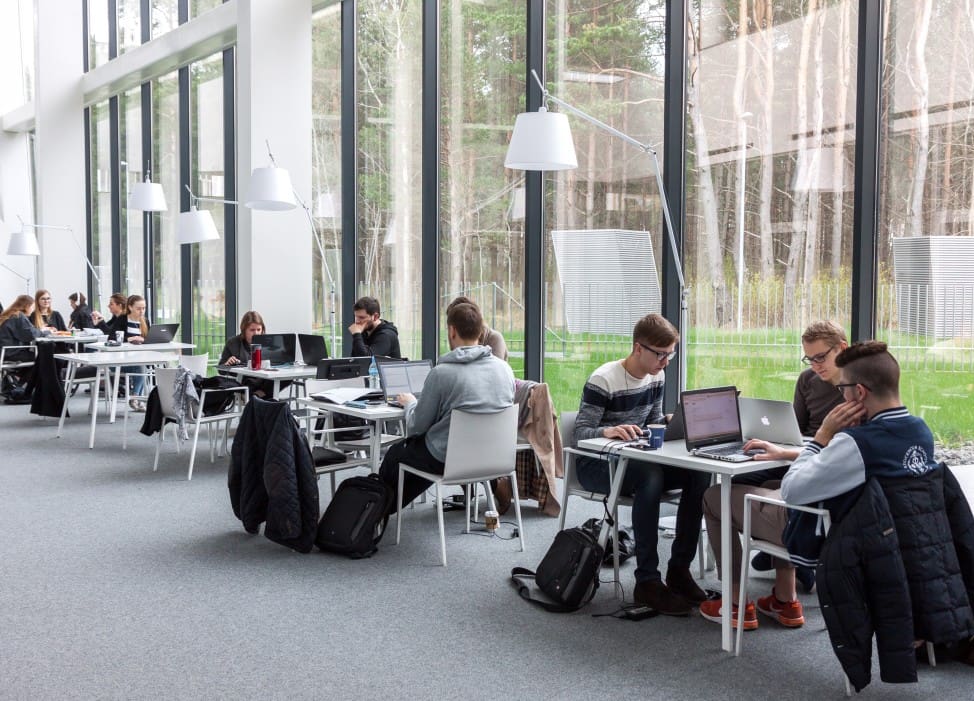HR’s New Frontier: Coworking Spaces (What You Need to Know)
May 01, 2019 by Aley Brown
Coworking spaces.
Let me say this phrase again for the people in the back:
Co-work-ing Spa-ces.
I thought I should repeat myself since this phrase didn’t even mean anything just five years ago. That’s pretty crazy to think about considering that every time I open my computer I’m bombarded with articles all about the wonders of coworking spaces.
These articles are great, but they talk about coworking spaces from an entrepreneur’s perspective. I’m here today to talk to you about coworking spaces from a human resources perspective.
And who am I to talk about them? Well, I’m an active member of a coworking space in my community in downtown Kansas City and, of course, I know a thing or two about HR from working here at Careerminds.
Here are some things we will cover in this blog to keep us all on track:
- What are these coworking spaces, exactly?
- Why and how they got started?
- Who uses them on a day-to-day basis?
- How your HR policy could and should be impacted by these spaces?
Now, let’s get into it before I get distracted by my urban farming neighbors down the hall from me.
What Are Coworking Spaces?
According to Chargespot, Coworking spaces are essentially shared workspaces (pretty self explanatory, really). They offer affordable office space for those looking to escape the isolation of a home office or coffee shop.
These shared workspaces offer a suite of office-like amenities such as hot-desks (meaning that they are used by different people throughout the day), private meeting rooms, kitchens, coffee, and more. In other words, coworking spaces are fully functional offices. They’re just used by different people doing different things instead of one company owning the entire space. This, as you can probably imagine, leads to a strong entrepreneurial and creative community that is ever-changing.
My coworking space is actually in an abandoned middle school in downtown Kansas City. The middle school has an auditorium for events. There’s a cafeteria that now has a trendy restaurant, a gym, multiple kitchens, and an outdoor walking path. Besides this, there are normal office features, like desks and conference rooms, which I discussed above.
Most coworking spaces have multiple plans to choose from when taking advantage of their services, typically ranging from a “hot-desk” option all the way up to a private office suite (fancy).
Who Are All of These Amazingly Cool People at Coworking Spaces? And Why Are They There?
Okay, I might be a little bias since I’m a co-worker, but usually the people that go to these spaces are pretty freaking cool.
But to understand the types of people who go to these spaces, you must first understand the need they have for a space to call their own in the first place.
In the last 5-10 years, the American economy has changed significantly, and these changes have created a coworking boom. There are, of course, a lot of economic factors that we could go through, but that would take far too long. So, in summary, here are some of the biggest ones:
- The gig economy has changed the way that tons of people work. No longer is a person an employee of a company, but a project worker for several different companies as needs arise. Because of this, they aren’t in a traditional office.
- As workplace policies become more progressive, more and more people are given the ability to work remotely. I fall into this category, as I work 100 percent remotely in Kansas City while my company is located in Philadelphia. And before going to my coworking space, I worked entirely from my home office and random coffee shops.
- Entrepreneurship is also thriving. More and more people (and not just Millennials), are ditching the corporate world to create their own startups. Coworking spaces are generally cheaper than renting an entire office space, so it is a great option for a small startup, especially when you factor in the price of furniture, electricity, and technology on top of rent.
- Finally, people are becoming more aware of the cons associated with working remotely. When I worked entirely from home, I felt them all. Not having a set schedule had me working long hours, not talking with any people, and not taking more than 100 steps a day. (An optimal day should have around 10,000 steps.) Some people don’t have these side effects, but for my extroverted self, I really started to feel them. I love my job, but getting cabin fever every week wasn’t allowing me to be my best self at work. Coworking spaces were really able to bridge that gap for me!
So, in general, when you go into a coworking space you are going to run into a lot of remote workers, freelancers, entrepreneurs, and startup employees.
Several coworking spaces realized this and purposefully make the space as innovative and creative as possible with special events that focus on small business, mindfulness rooms, and quirky art. Think of a hipster coffee shop vibe, but more business-y and tech oriented.
Most cities have their own local coworking spaces and chains. I belong to a chain here in Kansas City that has four other locations within the metro area. There are also nationwide changes like WeWork. Pricing can vary wildly from space to space, but, in general, the more local it is, the cheaper it is.
Fun side note: within the coworking space right now there is a trend to have specialized spaces for different groups, like all female coworking spaces, queer coworking spaces, specific work-related spaces for podcasters and others, and even spaces strictly for tech workers.
But How Does This Impact HR?
So what the heck does all of this have to do with HR? Good question. Let’s explore.
Coworking spaces are such a new development in the business world that there isn’t a lot of solid data or best practices about how to integrate coworking spaces into HR strategy.
But there are some common sense practices that can prepare you for when it comes to dealing with coworking spaces in the next few years.
If you’re at a large organization, you’re probably thinking: why will this matter to me?
Well, as work policies become more progressive, you’ll probably have employees working remotely. And a portion of these employees might want to work at a coworking space. Here are some things to consider:
- A new policy that I’ve been hearing a lot about this year is a coworking allowance for remote workers. If an employee chooses to work remotely, they will be given a monthly stipend to cover membership costs.
- Is your company acquiring any startups? If so, I would bet some change that those employees could be working at a coworking space. So, in that case, would you keep them at the space, integrate them into your own office, or get them a separate location? You need to consider the pros and cons of each, especially if you are in an acquisition heavy sector.
- How will your security and privacy be impacted by having employees at the coworking space? Will people outside your organization have access to confidential materials? As always, these questions need addressed when new tech is used.
- Will people be distracted at the space? With all of the community events and exciting tech everywhere, will they spend more time focusing on the coworking space, and building their loyalty to that, as opposed to your organization?
- And finally, if you are lucky enough to be the HR person onsite at a coworking space, how will this be different from conducting an HR strategy in a private, off-site location? An HR professional, should consider the potential confidentiality and security issues, distractions from cross startup friendships, and the cannibalization of talent within the space.
I know all these considerations wreak of doom and gloom. But thankfully, there are a lot of really great positives HR should consider when operating at a coworking space,too. For example:
- There are tons of learning and development opportunities provided free by the coworking space.
- The spaces are generally designed to help people be more innovative and creative, which will increase your employee’s productivity.
- As an HR professional, you can provide benefits that normal startup employees wouldn’t receive, like a company gym, walk paths, and world class restaurants onsite.
- These spaces provide flexibility and work-life balance, allowing your employees to work how they want, which will make them more productive in the end.
- They can be cheaper than renting office spaces, especially if you are in a startup.
- Networking. You obviously have a bunch of creative, like-minded individuals in one place – this will always lead to intermingling, which can be great for boost your employee’s development, network, and things of that nature.
Take a Chance on the HR Frontier with Coworking
Coworking spaces are still a new and growing area of business. Because of this, there aren’t a lot of best practices available for HR to incorporate into their strategy.
Even though that can be stressful, you shouldn’t allow it to deter you from experiencing the wonderful benefits of coworking spaces, for the sake of your remote workers, freelancers, acquired startup employees, or your employees at your own startup.
More from Careerminds
In need of outplacement assistance?
At Careerminds, we care about people first. That’s why we offer personalized talent management solutions for every level at lower costs, globally.






